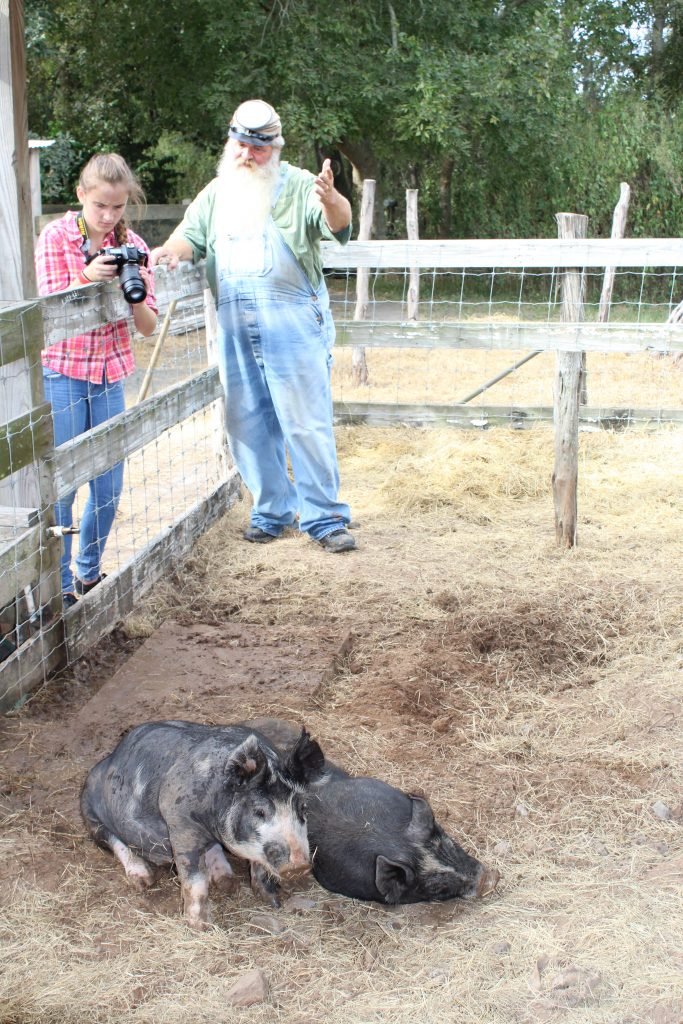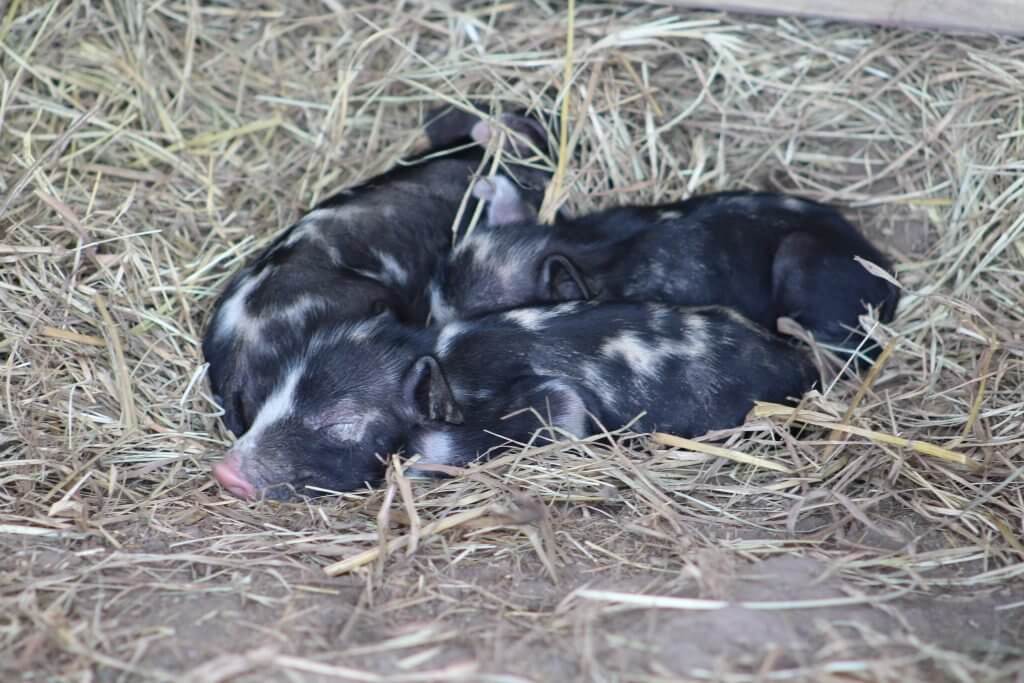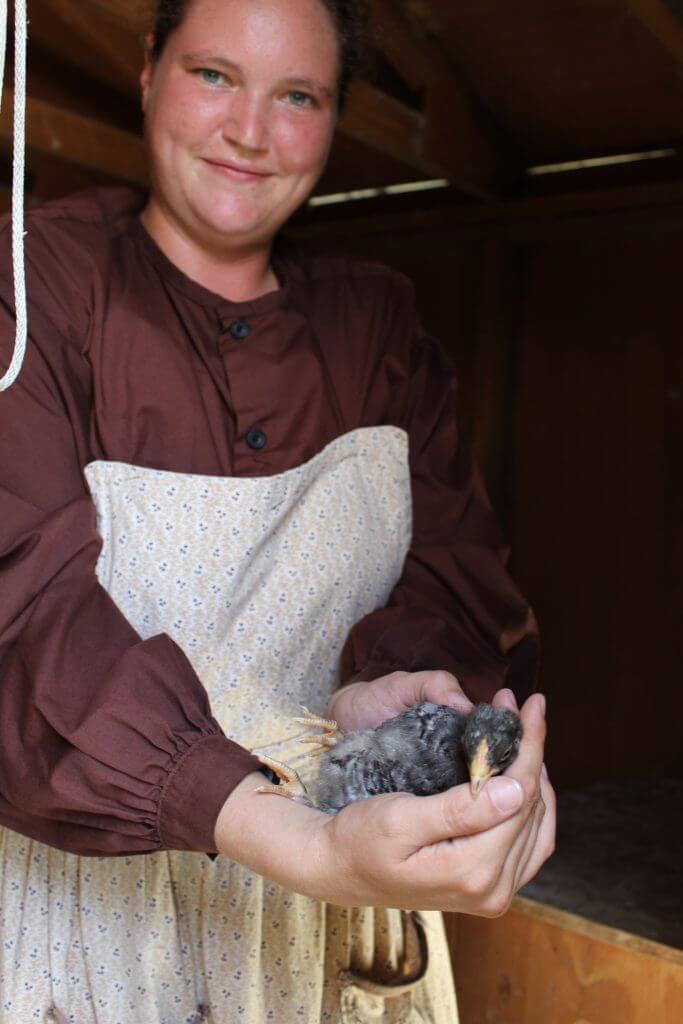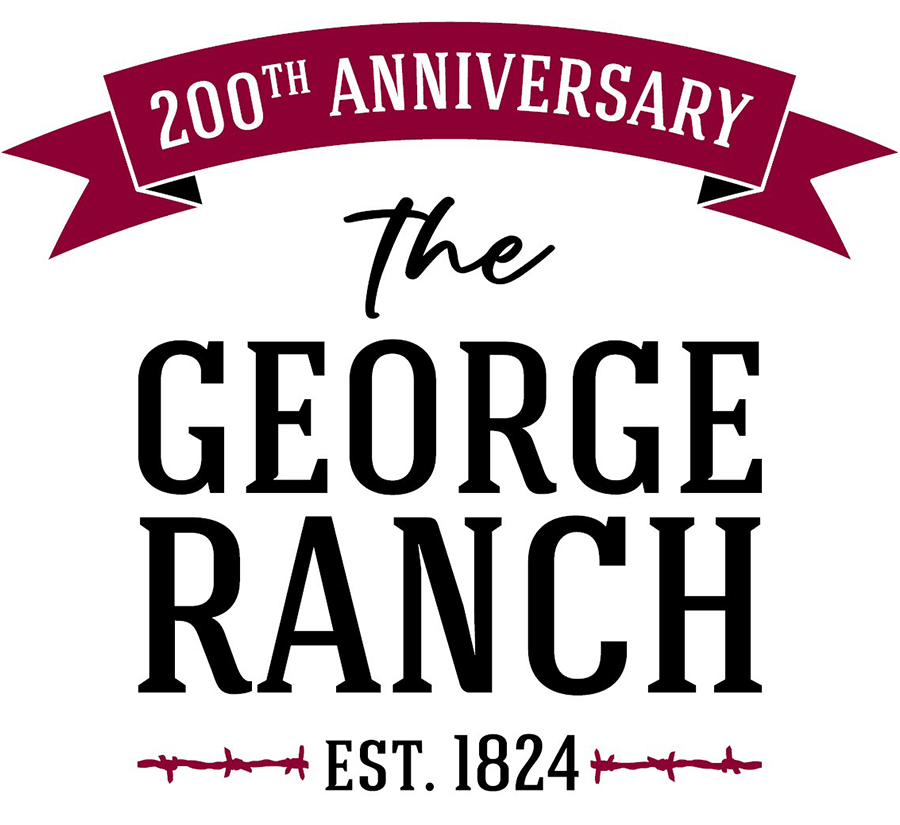Saving Heritage Breeds
The Subtle Way Living History Helps Keep Rare Livestock from Going Extinct

“Uncle” Bob Beringer introduces Berkshire pigs Mabel and Leona to visitors at the 1890s Sharecropper Farm. Berkshires are a rare breed that originated in England and were very popular during the late 1800s.
“Welcome to the Sharecropper Farm!”
“Uncle” Bob Beringer’s friendly, booming voice welcomes a group of international visitors to the 1890s Sharecropper Farm at the George Ranch Historical Park. The group approaches the farm’s rustic outbuildings as Uncle Bob motions for them to come look behind the split-rail fence.
“That’s Mabel and Leona right there,” he beams with pride, pointing to a pair of hefty 300-pound Berkshire pigs. “They’re my babies!”
Laughing, the guests admire the portly snorting sisters, taking selfies to document the introduction.
But Mabel and Leona aren’t just ordinary pigs. They are part of a behind-the-scenes initiative to preserve heritage animal breeds appropriate to the time periods at the Park.
“Though the Park has always had some heritage breeds, we’ve made a point to diversify in recent years,” said Director of Programs Krystal Willeby. “Heritage breeds are one of the smaller, subtle pushes of the living history industry, and we take the responsibility seriously.”
WHAT’S A HERITAGE BREED?

Seven Ossabaw Island Hog piglets were born at the 1830s Jones Stock Farm last week.
A heritage breed is a traditional livestock breed that was raised by our forefathers, before the rise of modern industrial agriculture.
“Now that livestock animals are bred thoroughly and efficiently, a lot of these heritage breeds have fallen out of favor – which means that they’re dying off,” Willeby said.
For example, Ossabaw Island Hogs, which are found at the 1830s Jones Stock Farm, are listed as a critically-endangered breed by The Livestock Conservancy. These hogs are the closest genetic match to the breeds the Spanish brought to the New World in the 1500s, and are what early pioneers would have seen running wild by the thousands when they first came to Texas.
Mabel and Leona are Berkshire pigs, a rare breed that originated in England.
“As we researched breeds from the late 1800s, we discovered a ‘British invasion’ of sorts when it came to pigs and chickens,” Willeby said. “Some of the English breeds were brought over to the U.S. and became very popular for their even temperaments and premium mix of genetics.”
The Park’s programs department is currently researching pig breeds for the 1860s Ryon Prairie Home site, and are specifically considering the Red Wattle, which is listed as threatened.
FEATHERED INTERPRETERS

Megan Cromeens, site lead for the 1860s Ryon Prairie Home, holds a Blue Andalusian chick. Andalusians are on The Livestock Conservancy’s “watch” list for endangered breeds.
Poultry was important to pioneers for eggs, meat and money, so chickens were an integral part of nearly every homestead. The Park has always had both Dominique and Plymouth Rock chickens, which are on the “watch” and “recovering” lists.
Last summer, the Park added three additional breeds to the mix: Blue Andalusians and Cochins went to the 1860s Ryon Prairie Home site and Buff Orpingtons, Rhode Island Reds and Gold-Laced Wyandottes went to the 1890s Sharecropper Farm.
“Cochins are a favorite among Park visitors because they’re so fluffy,” said Megan Cromeens, site lead for the 1860s Ryon Prairie Home. “It sounds silly talking about chicken personalities, but our teen volunteers have actually given a few of our chickens names – like Disco Pants – because they have such unique characteristics.”
The 17 hens at the 1860s site lay an average of 12 to 15 eggs a day, but due to FDA rules, those eggs cannot be shared with the public. Instead, Cromeens is researching different 19th-century methods for preserving eggs so she can provide visitors with an extra glimpse into 1860s ranch life.
GOING FORWARD
Looking toward the future, the programs department is currently researching sheep and turkeys as a way to add variety and a give a more thorough interpretation of livestock history at the Ranch.
“We know that the Georges had sheep,” Willeby said, “but more research is definitely needed before any additional program is implemented.”
And though heritage breed conservation isn’t the main focus of the Park, it’s definitely an added bonus that coincides with the Fort Bend History Association’s mission to preserve, educate and inspire
“By doing our part to help retain these breeds, we’re saving that history for the next generation,” Willeby said. “Without it, the history of those breeds will be lost.”
This article was written by Jennifer Farrell and originally appeared in the July-September issue of the Fort Bend History Association‘s quarterly membership publication, the Texian Gazette. Become a member today and be the first to learn about everything going on at the George Ranch Historical Park, Fort Bend Museum, DeWalt Heritage Center and more!



